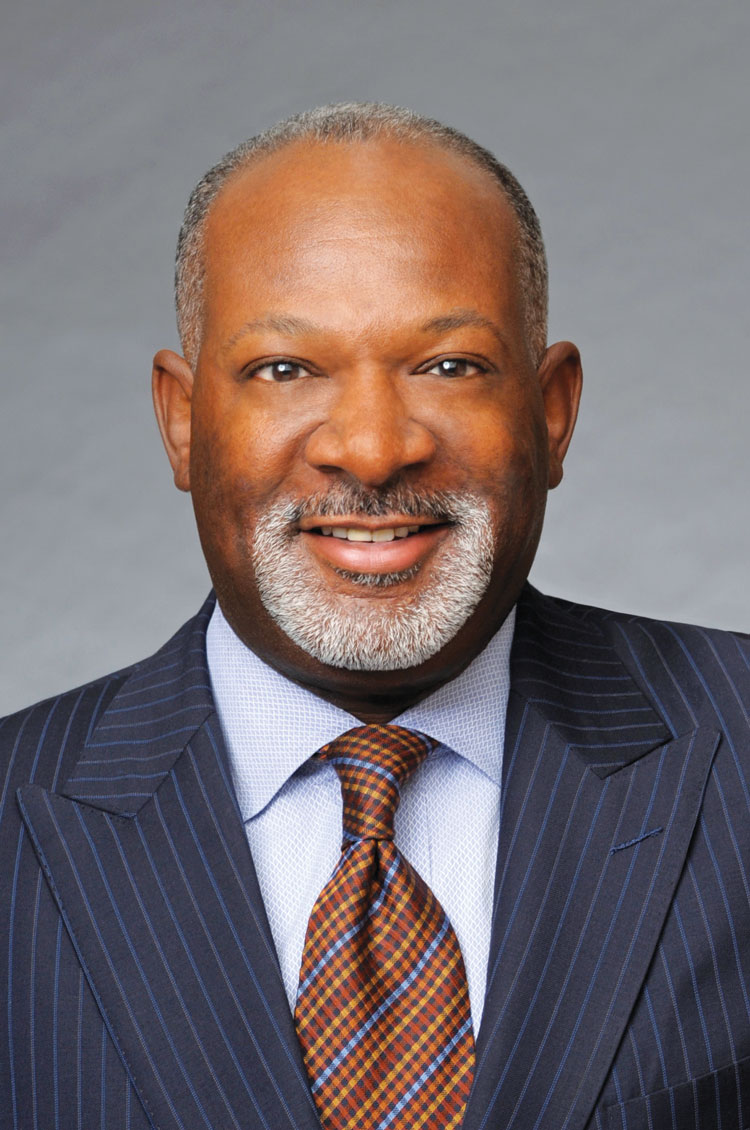Time's up: Legal, judicial systems slow to adapt to sexual harassment and assault issues

Photo illustration / Shutterstock
Given the likelihood of having a sexual harassment lawsuit dismissed, many employment lawyers won’t represent a plaintiff unless there are multiple witnesses willing to say that the accuser harassed them too. Describing it as “Bob Packwood syndrome,” in reference to the former Oregon U.S. senator who resigned in 1995 following sexual harassment allegations from staff, Jocelyn Burton says that people who want to bring a sexual harassment lawsuit have been told by lawyers that there must be between five to 10 others also targeted by the accused.
“I’m hoping that as a result of Me Too, people realize that [sexual harassment] is a lot more pervasive than they think it is—and are more likely to believe women,” says the Oakland, California, employment lawyer. “But there are a lot of stereotypes that play into who gets believed and who doesn’t.”
And even if the plaintiff finds an attorney, he or she frequently must pay costs to get past summary judgment, rather than the attorney taking the case on a contingency-fee basis. Pretrial costs can be as high as $100,000, says Rebecca Pontikes, a Boston employment lawyer who represents plaintiffs. She doubts that many sexual harassment plaintiffs will have immediate success in court, despite increased negative attention toward high-profile men accused of sexual harassment.
“They’re fighting Goliath if they go to court,” she says. “The rate in which my phone rings may increase, but I don’t think the rate in which people actually get into court will change.”
It’s also hard to find an attorney to take sexual harassment charges brought in mandatory arbitration, says Roberta Liebenberg, co-chair of the ABA Presidential Initiative on Achieving Long-Term Careers for Women in Law.
“There are studies around arbitration, in terms of fairness, and you’re limited in your discovery,” says Liebenberg, a partner with Philadelphia’s Fine, Kaplan and Black. She adds that some arbitration awards may not be big enough to interest most attorneys.
“I don’t think arbitration should be prohibited, but it shouldn’t be mandated,” she says. “Women should have the opportunity to take a case to court and avoid arbitration.”
CULTURE CHANGE
Employers may take a harder look at sexual harassment in their workplaces “because they don’t want to be the next Harvey Weinstein. But most plaintiffs aren’t Gretchen Carlson,” Pontikes adds, referring to two entertainment figures associated with high-profile sexual harassment accusations.
Weinstein, an Academy Award-winning filmmaker accused of sexual misconduct by more than 80 women over four decades, with some of the accusations including sexual assault, was forced out of the Weinstein Co. after the New York Times and the New Yorker wrote about the allegations. The Weinstein Co. declared bankruptcy March 19, in addition to releasing employees from their nondisclosure agreements. Carlson, a former Miss America and Stanford University graduate, was fired from her job hosting the Fox News Network’s The Real Story shortly before she sued then-chairman and CEO Rogers Ailes for sexual harassment. Twenty-First Century Fox Inc. settled the lawsuit for $20 million in September 2016.

Photograph of Gerald Pauling courtesy of Seyfarth Shaw LLP
Besides Weinstein and Ailes, figures recently accused of sexual harassment include Alternet executive editor Don Hazen, actor Kevin Spacey, recently retired 9th U.S. Circuit Court of Appeals Judge Alex Kozinski and President Donald Trump. The news articles around those allegations may make it easier for people to believe someone who says they were sexually harassed, says Joe Sellers, a Washington, D.C., employment partner with Cohen Milstein Sellers & Toll who has filed class action complaints against companies including Kay Jewelers, Walmart and Chipotle.
He also says that businesses are adding more training programs targeted at preventing sexual harassment in light of the increased attention. That won’t be meaningful, he adds, unless the training leads to work environments where employees can express what makes them uncomfortable without fear of retaliation.
“I think the best conditions that are likely to reduce the prospects of harassment are where people can have a free discussion about these things,” says Sellers, mentioning as an example asking a colleague to a meal outside the office. The person making the invitation may not mean anything by it other than discussing career issues, Sellers says, and may make multiple requests.
“Is that sexual harassment? Probably not, but you might be putting pressure on someone to engage in a social interaction that they don’t want to,” he says, adding that in a good work environment the person receiving the invitation would feel comfortable saying that he or she preferred to keep career discussions in the workplace, without any value judgment or the risk of being perceived as ungrateful.
“You want to create a workplace where people can be comfortable talking about what makes them uncomfortable,” Sellers says.
As hard as it is for people in professional jobs to report sexual harassment, the stakes are often higher for workers in hourly wage positions, who frequently have a greater risk of getting fired, Sellers says.
“We all know that if you complain about sexual harassment and you are fired, that’s unlawful,” he says. “Workers can say, ‘That’s fine, but I have no paycheck.’ For women in low-wage jobs that’s a powerful deterrent, and it’s much easier to put up with it or leave.”
Gerald Pauling, a Chicago-based employment partner with Seyfarth Shaw, provides nonharassment and behavior training to employees at all levels, and does “executive coaching” with management and executives. One approach, he says, is presenting people with harassment situations that would personally affect them. Another is talking about how engaging in harassment can harm someone’s career.
“It’s not so much ‘Hey, do you realize that your behavior bothers other people?’ Most of us are not that forward-thinking. It’s more: ‘Do you understand the types of situations these behaviors create, and what it looks like at the end?” Pauling says.
He adds that sexual harassers are not necessarily people who are the best revenue generators or those with the impressive industry connections. But many display narcissistic tendencies, Pauling says, and seek out work environments where they won’t get caught, or people won’t object to their behavior.
“We’re talking about people who are savvy and experienced businesspeople, who have achieved success by being adept at reading people and navigating their way through an organization. We’re seeing individuals who engage in these behaviors strategically,” Pauling adds.
CRIMINAL COURTS TOUGHEN UP
In criminal law, training has made a significant difference in prosecutions related to sex crimes, and it helps that more women are police, lawyers and judges, says Josh Marquis, the Clatsop County, Oregon, district attorney. He mentions a conviction this January of a former high school wrestling coach and Coast Guard officer, who in a bench trial was found guilty of inappropriately touching a 17-year-old girl who was his foster child, and having sex with her friend, who was 15. The conduct in question was from 2005, and the defendant had no prior convictions.
“It was really tough because sometimes the assumption was that these are evil teenage girls,” Marquis says. “I think the Me Too movement has opened people’s eyes and moved things a little farther down the road.”
Sidebar
ABA entities offer resources to address sexual harassment
Resolutions
Resolution 302, introduced by the Commission on Women in the Profession, the Section of Litigation and the Section of Civil Rights and Social Justice, urges all employers to adopt and enforce policies that prohibit, prevent and redress “harassment and retaliation based on sex, gender, gender identity, sexual orientation and the intersectionality of sex with race and/or ethnicity.” The ABA House of Delegates adopted it in February.
An amendment to Rule 8.4 of the ABA Model Rules of Professional Conduct states that harassment or discrimination in the practice of law “on the basis of race, sex, religion, national origin, ethnicity, disability, age, sexual orientation, gender identity, marital status or socio-economic status” amounts to professional misconduct. Adopted by the House in 2016, it was sponsored by the Standing Committee on Ethics and Professional Responsibility, the CRSJ section, the Commission on Disability Rights, the Diversity & Inclusion 360 Commission, the Commission on Racial and Ethnic Diversity in the Profession, the Commission on Sexual Orientation and Gender Identity, and the women’s commission.
Policies
A model workplace policy on employers’ emergency responses to domestic, sexual or dating violence and stalking is offered by the Commission on Domestic & Sexual Violence.
The CRSJ section, Labor and Employment Law Section, women’s commission, Young Lawyers Division and the CDSV together created a Sexual Harassment and Assault in the Workplace Working Group. The group is drafting a model policy advocating for improved domestic and international laws regarding sexual harassment and assault.
Publications
Zero Tolerance: Best Practices for Combating Sex-Based Harassment in the Legal Profession, published by the ABA women’s commission. In April, the commission was in the process of designing an online toolkit as a companion piece for the publication.
The Judges’ Journal scheduled to be published in November will focus on sexual harassment.
Student Lawyer’s March issue includes a piece by Leah Litman, a University of California at Irvine law professor, focusing on the lack of gender parity in the legal profession—and what can be done about it.
Podcasts
The series On the Ground, sponsored by the CDSV, is working on three episodes focused on the Me Too movement’s resurgence and expansion.
Webinars
The CRSJ section, women’s commission, CDSV and YLD have created a six-part series of webinars about sexual harassment and assault in the workplace. (Part 1 | Part 2 | Part 3 | Part 4 | Part 5 | Part 6 - to be scheduled)
Continuing Legal Education
Three events are scheduled for the ABA’s annual meeting, which takes place July 27 through Aug. 7 in Chicago. One, co-sponsored by SOGI and the Office of Diversity and Inclusion, focuses on best practices following the update to Model Rule 8.4. Another, sponsored by the CRSJ section, focuses on sexual harassment and assault in the workplace. A third program, “#MeToo and the Judiciary,” is sponsored by the Judicial Division’s JD Diversity Program.
This article was published in the June 2018 ABA Journal magazine with the title "Time’s Up: As the Me Too movement continues to shed light on sexual harassment and assault and spark changes in various industries, the legal and judicial systems have been slow to adapt."
Write a letter to the editor, share a story tip or update, or report an error.


